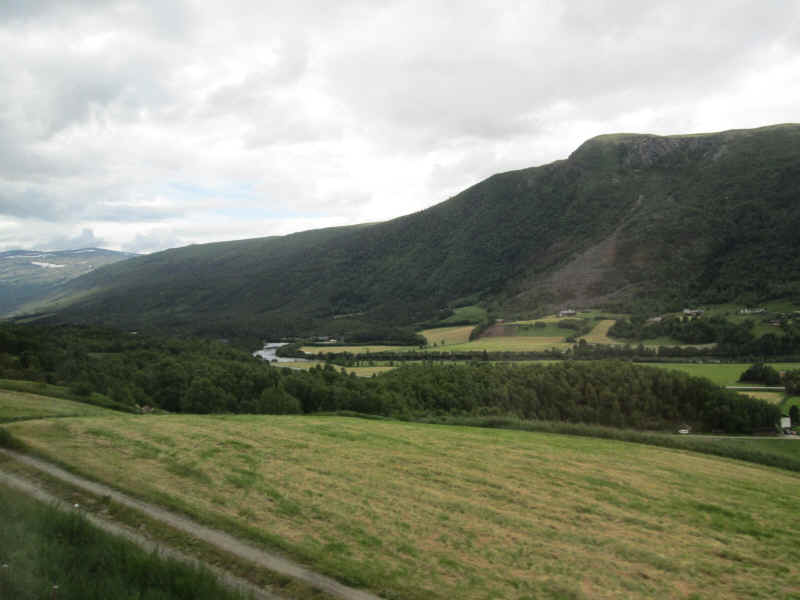
Dombås to Oslo
Day 13
Our experiences at the Dombäs Hotel continued the next morning: breakfast was interesting! We had to ask for milk, cups and jam which they'd forgotten to put out. There was lots of hot food but no fruit and very little in the way of nuts, seeds, yogurt etc. We got the feeling that they catered for large non-Scandinavian coach parties so perhaps the normal Norwegian breakfast wasn't they wanted.
Later we took the train to Lillehammer, which was the same type of train used on the Åndalsnes line.

The railway and E6 road follow the Gudbrandsdal valley the whole way from Dombås to Lillehammer.
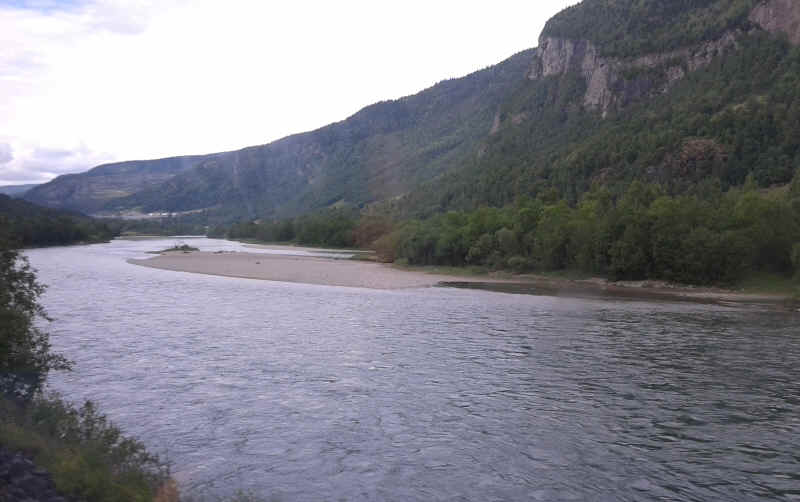
The nature of the valley changes from being quite wide...
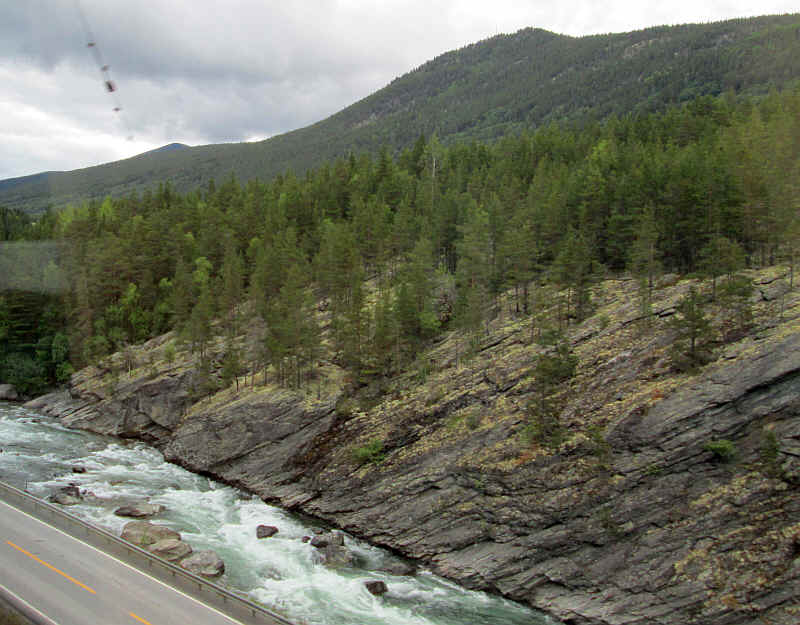 |
|
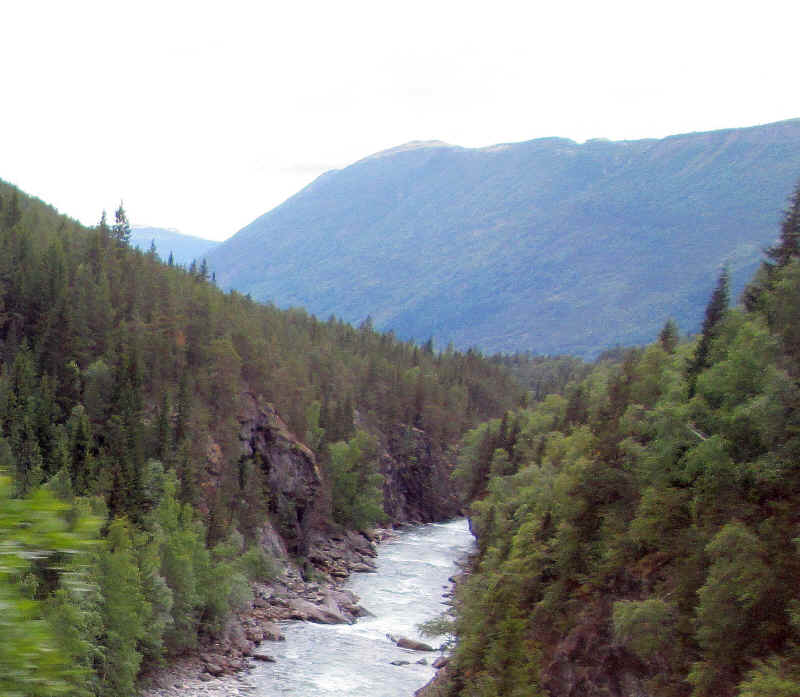 |
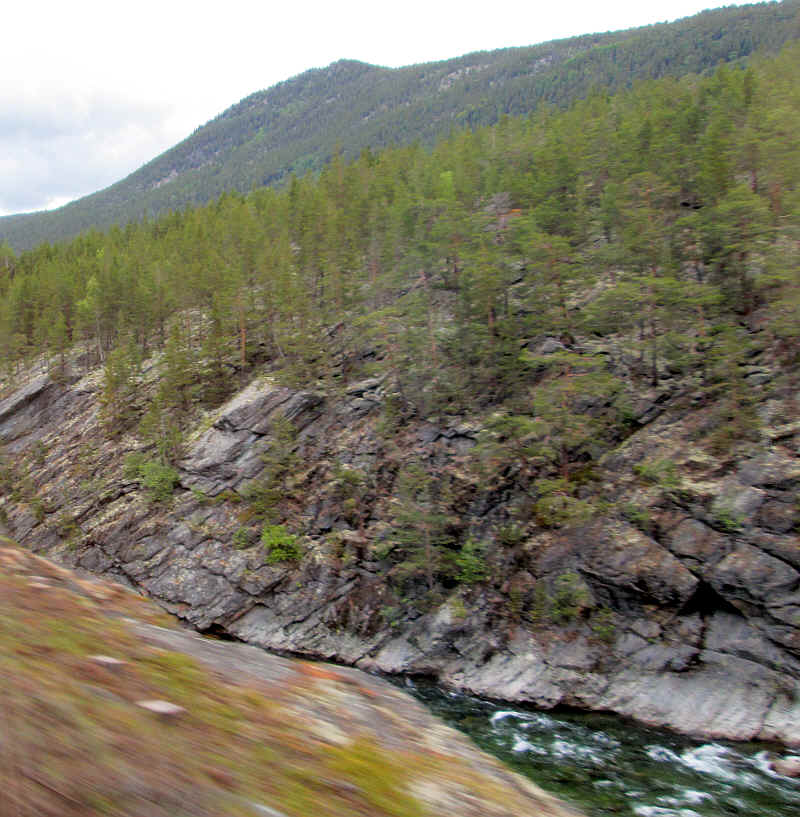 |
...to passing through narrow sections where the river and railway drop quite steeply through gorges.
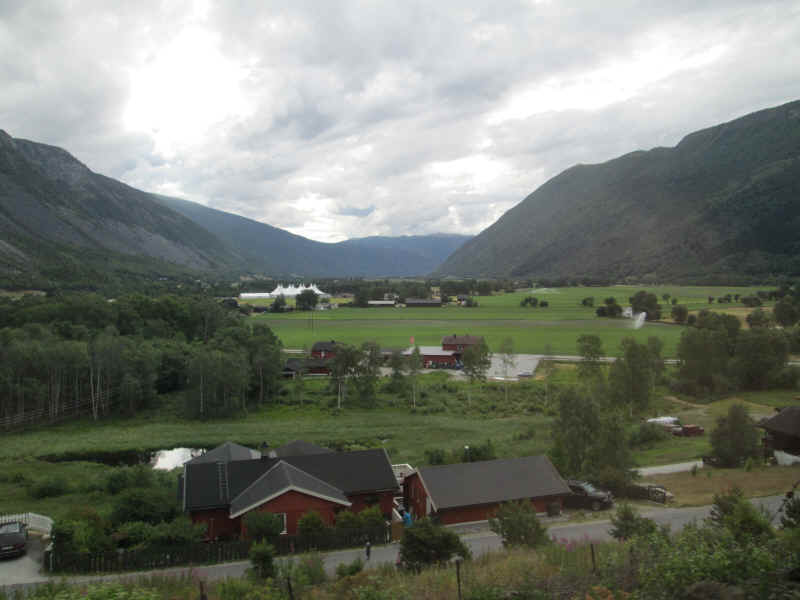
Eventually the flat valley bottom is reached.
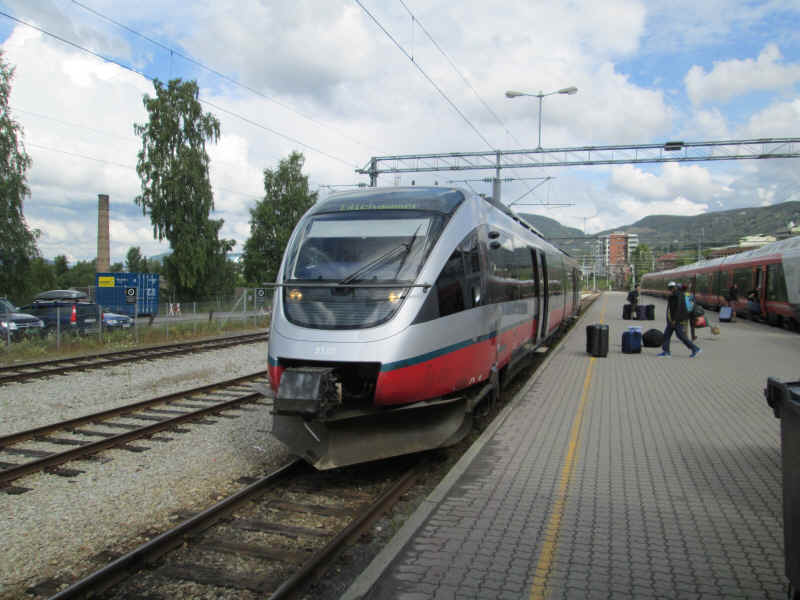
Our train has arrived in Lillehammer, which is famous as a winter sports centre and was the venue for the 1994 Winter Olympic Games...
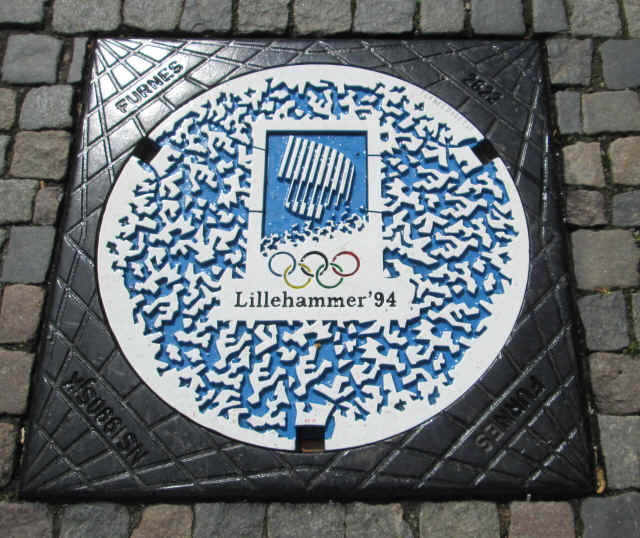
...which is commemorated all over the town on drain covers!
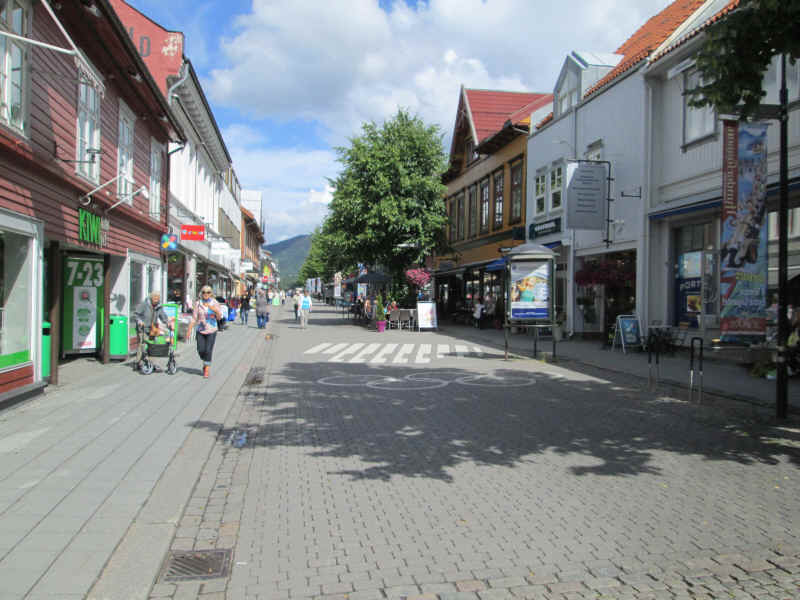
Lillehammer is a very pleasant town and totally different in atmosphere to the towns we'd visited in the far north of Norway.
We walked along the main pedestrian street where there were some street musicians. We went to try to get a view of ski jump but gave up as it was clearly far above the town. e.
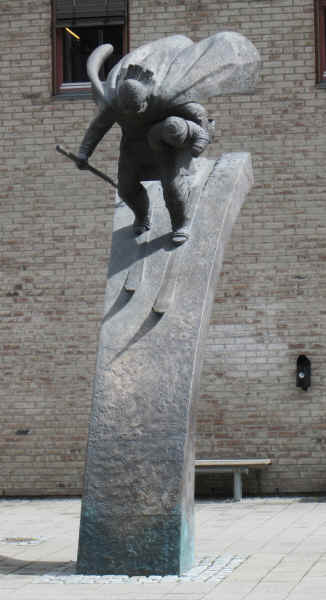
The Birkebeiner Statue shows the baby King Hakon IV being rescued and carried to Trondheim in the 12th century.
Lunch was bread and cheese sitting on a bench in the town followed by a very strong cup of coffee at the new transport interchang
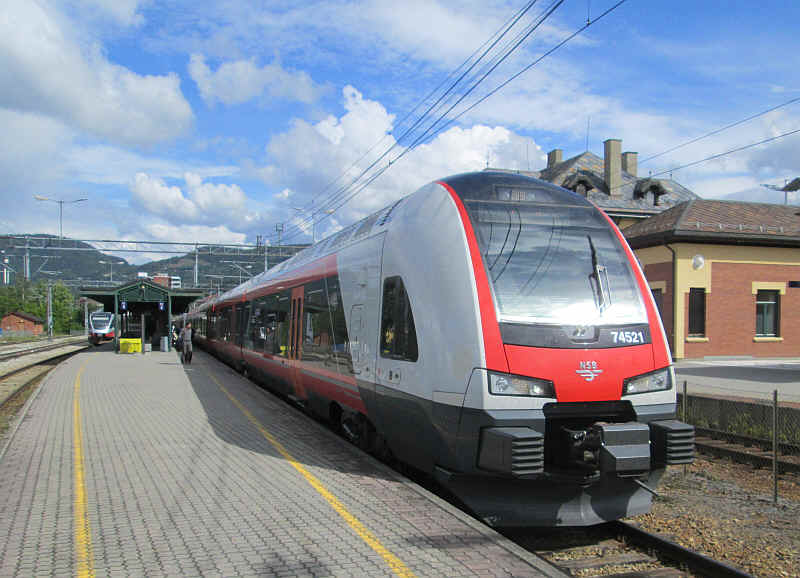
Back at the station we boarded one of the new trains used on the frequent regional services in southern Norway for the last leg of our journey to Oslo.
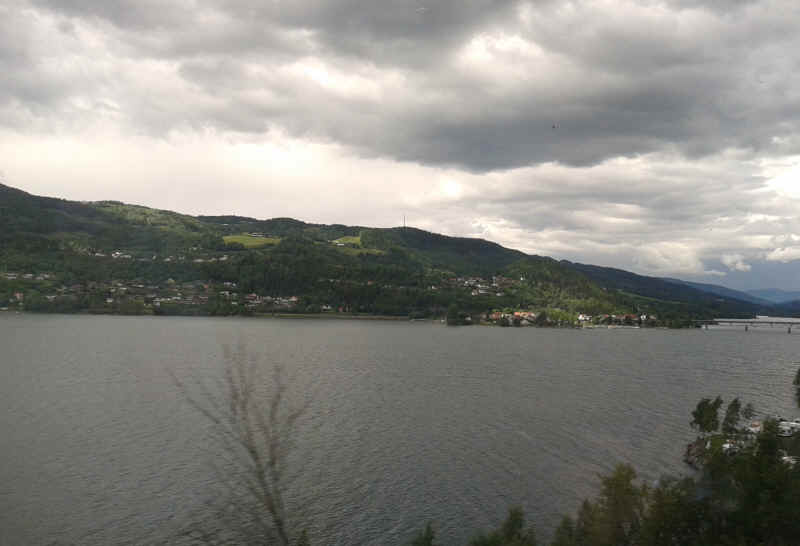
For the next hour or so the railway follows the shores of Lake Mjøsa which is the largest lake in Norway and is 117 km long starting at Lillehammer in the north and ending at Eidsvoll in the south.
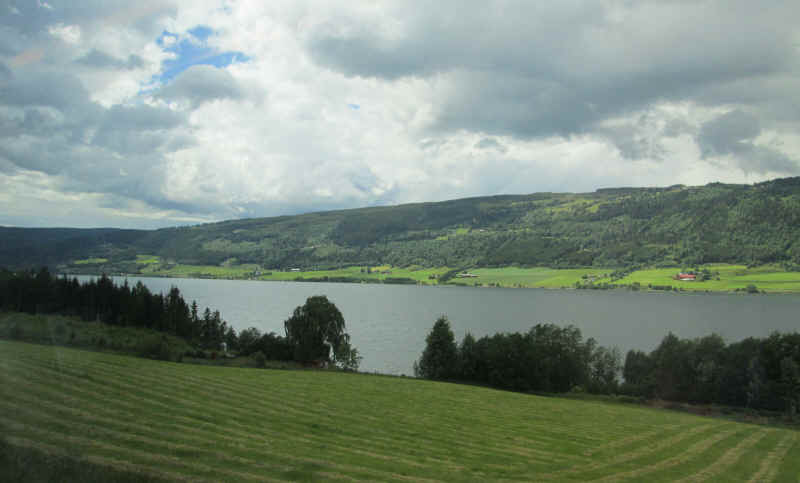
For most of the time the railways is within sight of the lake either above it or ....
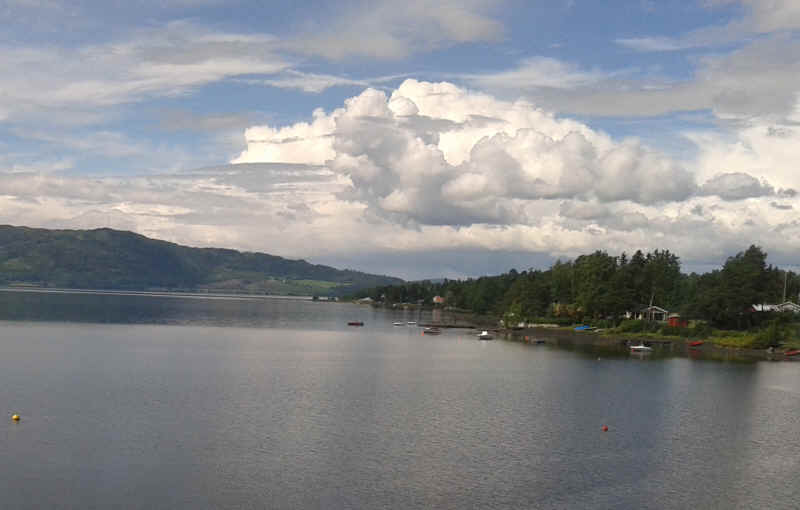
.....running along its shores.
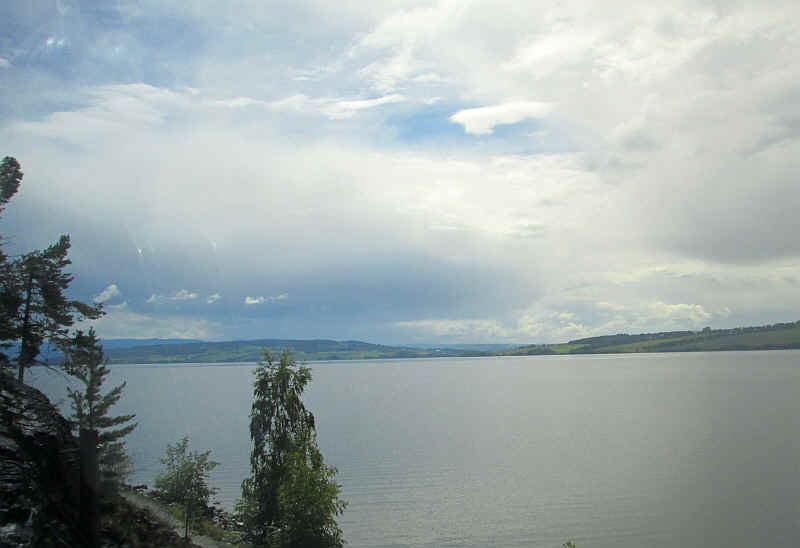
In several places there are considerable engineering works taking place to improve the railway and E6 roads - some of this can be seen in the bottom left hand corner of the photo.
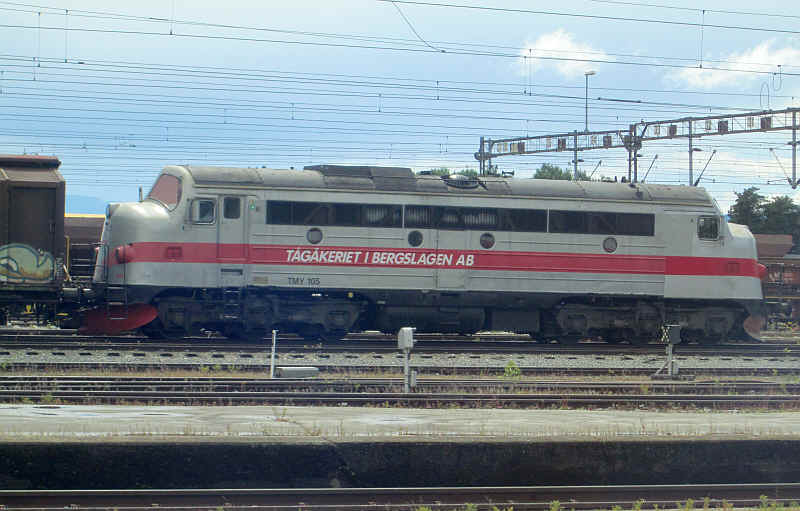
I had to include this photo of an old diesel locomotive. Until the 1990s these old and very noisy locomotive used to pull passenger and freight trains on all the non electrified lines, but most have now been taken out of service, so it was a surprise to see one of them still in use on a freight train at Hamar
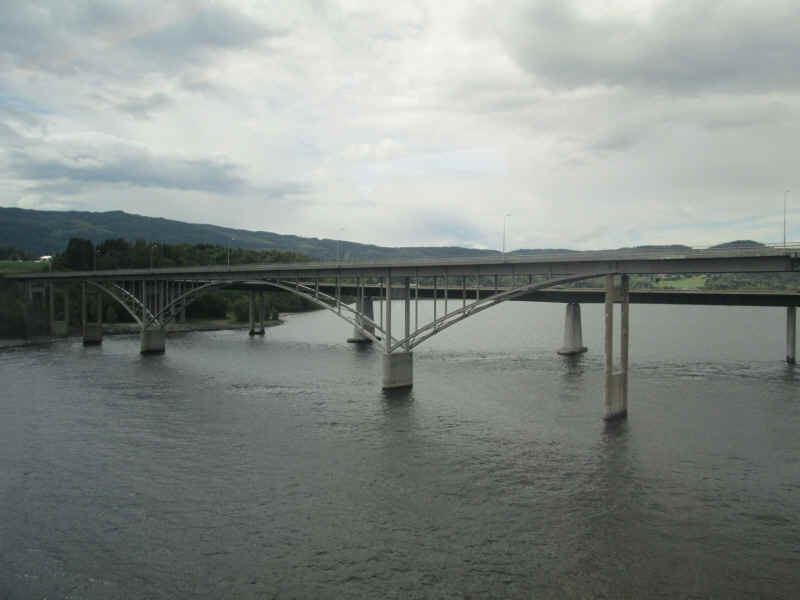
This is the Minnesundbrua bridge where the railway and two road bridges cross the end of the lake - the new E6 bridge, built in 1994 in time for the Winter Olympics, is behind the older bridge opened in 1959. Before that there was a car ferry across the lake.

The lake narrows and forms the Vorma river, which flows south and, after passing through several more lakes, eventually enters the Skagerrak well south of Oslo.